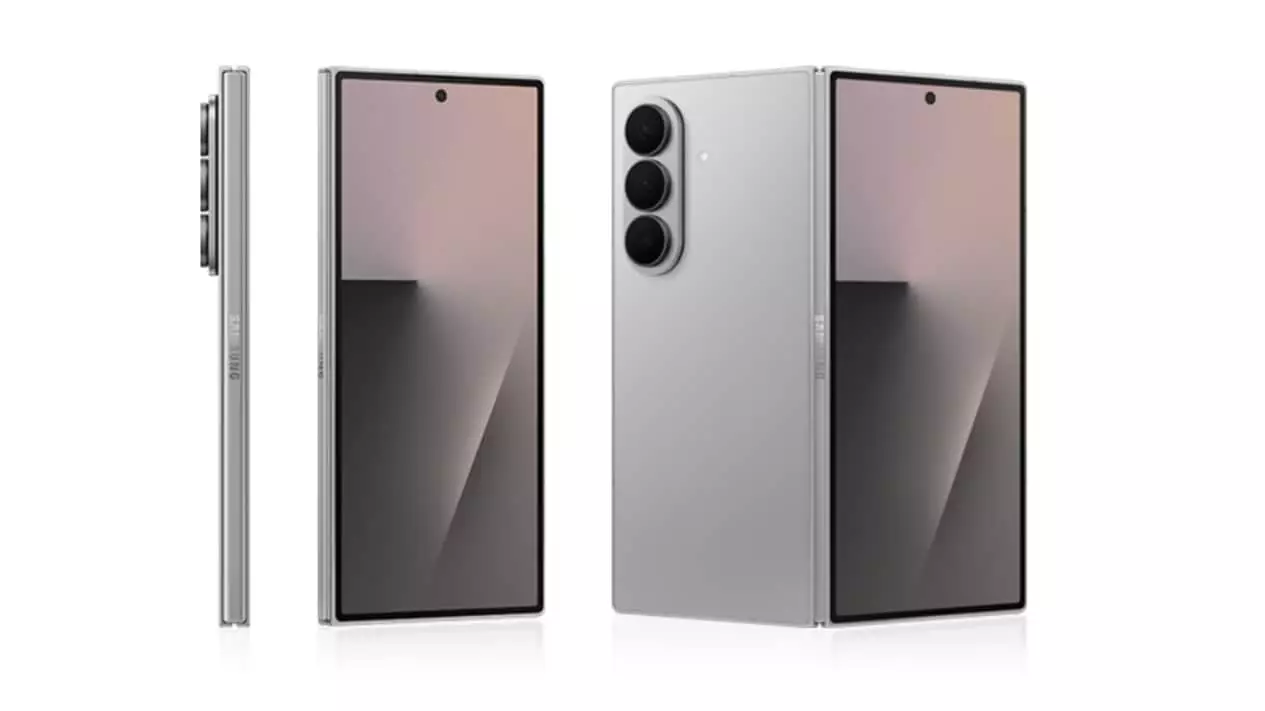For years, the narrative around foldable smartphones was that they represented a niche luxury, an experiment in the relentless pursuit of innovation. Now, the tide seems to be shifting—whether consumers truly understand the transformative potential of these devices or are simply seduced by marketing hype remains a question. Samsung’s recent surge in pre-orders for its Galaxy Z Fold 7 and Galaxy Z Flip 7 highlights a notable evolution in consumer preferences. But does this shift symbolize genuine enthusiasm, or is it a fleeting trend fueled by brand loyalty and the allure of novelty?
The data from South Korea is particularly revealing. Historically, the Galaxy Z Flip series captivated the market with its sleek flip design, appealing to a younger, trendier demographic more attuned to style than substance. Yet, the recent pre-order numbers show the Galaxy Z Fold 7 edging ahead, accumulating more interest than its clamshell counterpart for the first time. This counters the long-standing assumption that ultra-compact flip phones would dominate the foldable segment, and indicates that consumers might now be craving larger screens—hybrid devices thick with potential but also riddled with doubts about durability and real-world utility.
The 1.04 million pre-orders mark a significant milestone, edging past last year’s figures and signaling momentum that extends beyond superficial intrigue. Still, the core question lingers: Is this enthusiasm rooted in a practical desire for better productivity and multitasking capabilities, or is it merely an extension of Samsung’s marketing muscle? Especially considering the price tags—over Rs. 1.7 lakh in India—these devices are hardly accessible to the average consumer, raising doubts about whether hype or genuine consumer need drives these numbers.
The Illusion of Market Maturity: Are Consumers Truly Ready for Foldables?
The apparent popularity of the Galaxy Z Fold 7 raises larger concerns about consumer understanding. Foldables, after all, come with significant compromises: fragile hinges, bulkier profiles, and questionable long-term durability. Are consumers objectively weighing these issues, or are they succumbing to the prestige of owning the *latest* tech—a digital status symbol more than a practical tool? The recent data suggests that early adopters, especially men in their 30s and 40s, are leading the charge, perhaps reflecting a demographic that is more receptive to experimental tech or driven by the desire to stand out.
Yet, the enthusiasm might be more about scarcity and exclusivity than a fundamental belief in foldables’ utility. The fact that the Galaxy Z Flip series still commands a substantial share of pre-orders indicates a lingering attachment to the familiar—an aesthetic that merges style with utility. The preference for colors like Blue Shadow and Coral Red underscores that emotional appeal still plays a critical role in consumer choices. It’s an indication that, ultimately, many see these devices as personal statements rather than essential gadgets.
While the industry eagerly anticipates the conversion of pre-orders into actual sales, skepticism remains warranted. Quick adoption in a high-end market does not necessarily translate to mass-market appeal. The affordability barrier, coupled with concerns about longevity and repair costs, could stall broader acceptance. Moreover, as competitors try to emulate Samsung’s foldable form factors, the question becomes whether consumers are truly ready to embrace a new form of mobile technology or merely capitalizing on a temporary fad.
The Broader Implications: A Shift in Consumer Paradigm or a Market Gimmick?
The rising interest in foldable smartphones signals a potential paradigm shift—if the industry can deliver on promises of durability and practical benefits. Yet, the current landscape suggests we are, at best, witnessing a transitional phase that tests consumer patience and understanding. Samsung’s dominance is undeniable, but it also highlights how much influence a single brand wields in shaping perceptions.
Furthermore, the global rollout, including India’s promising pre-order figures, points to a growing appetite for innovative devices in emerging markets. However, these numbers may mask a deeper issue: whether consumers are genuinely prioritizing functionality, or simply chasing after novel experiences that may evaporate as quickly as they arrived.
In the end, foldables serve as a litmus test for modern consumerism—will people invest in the promise of future-proof tech, or will disappointment and durability concerns undermine this shift? Only time will tell whether this is a genuine evolution or a carefully curated illusion of progress. For now, the industry must reckon with the fact that consumer trust and understanding are just as crucial as the hardware itself.

Leave a Reply